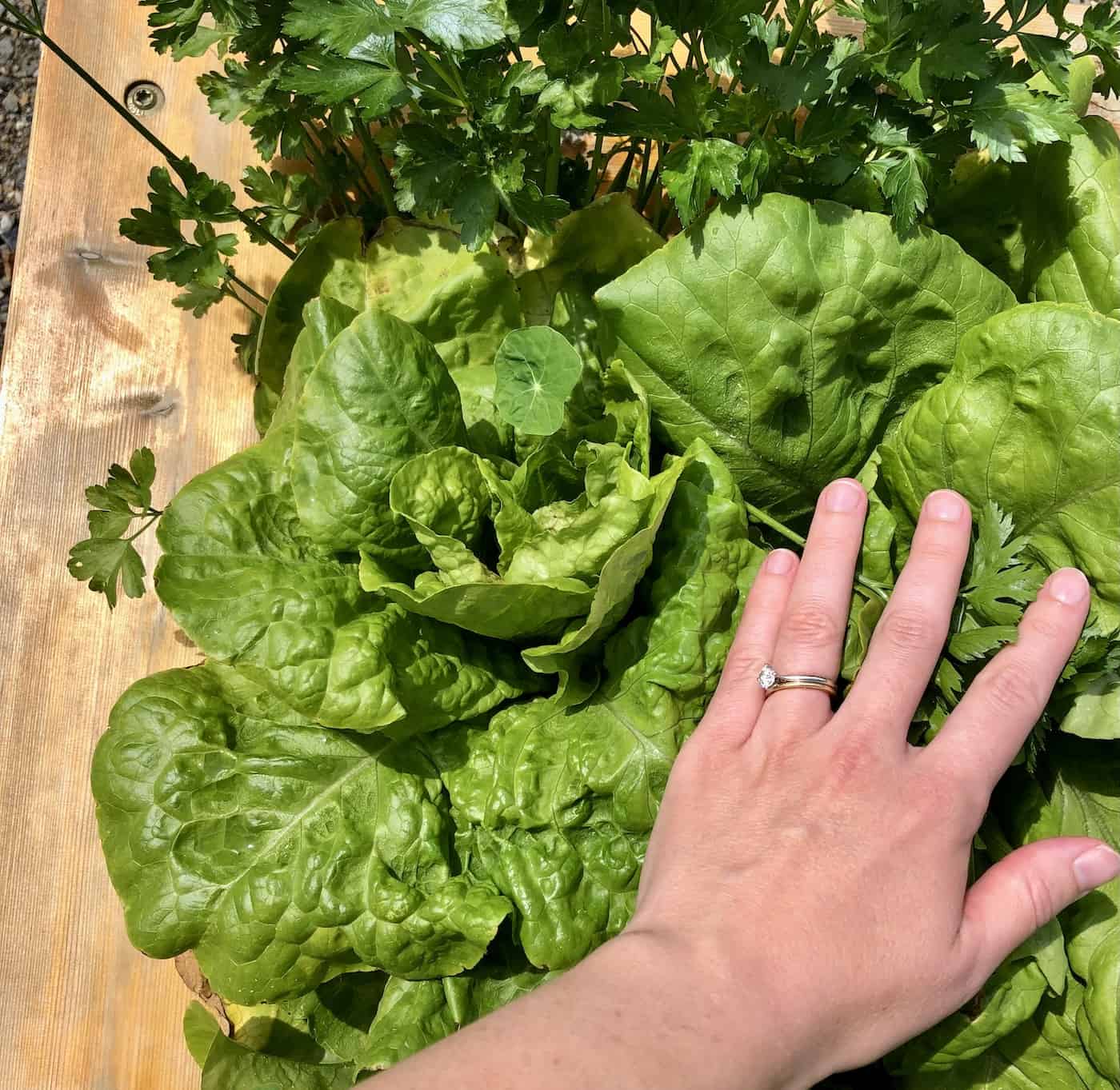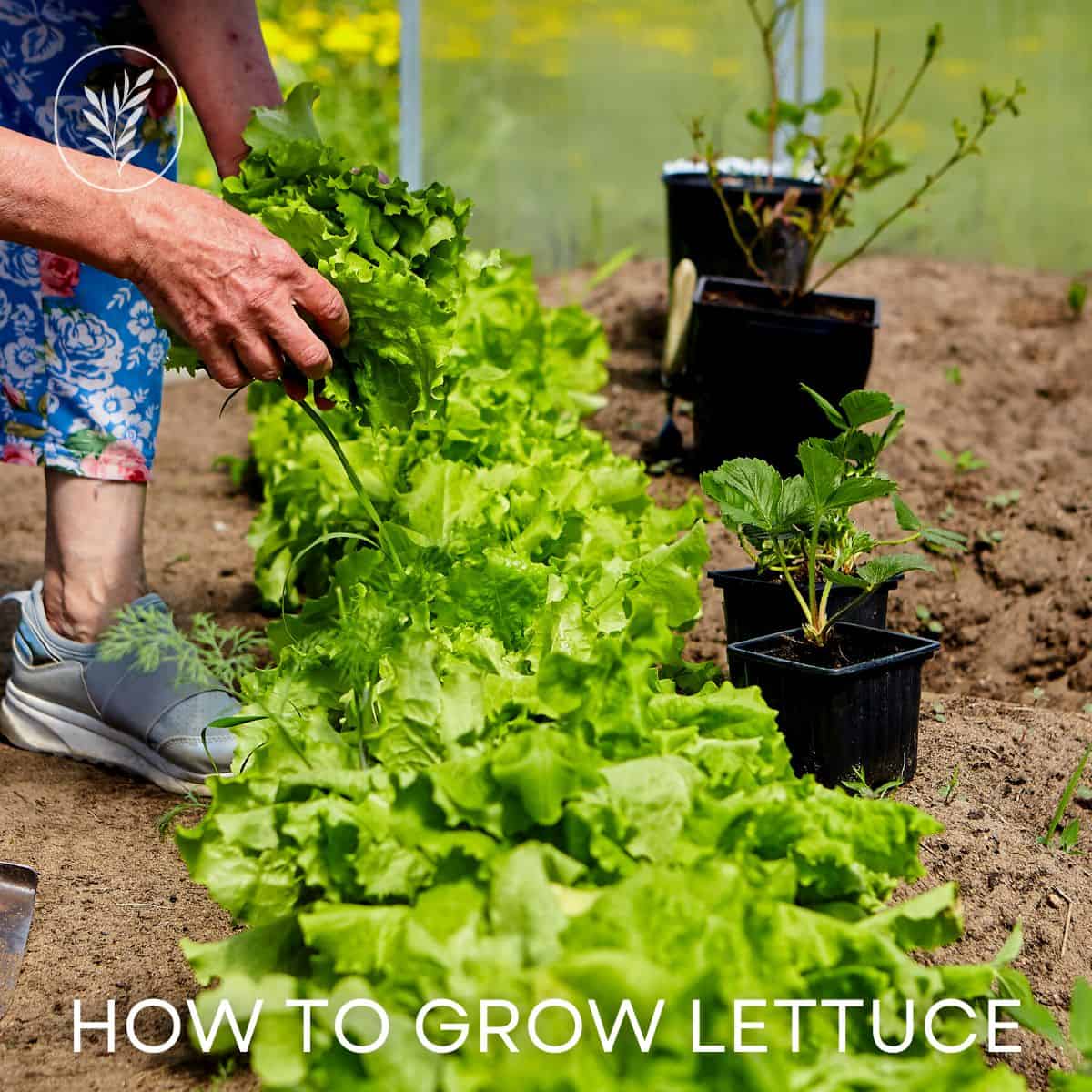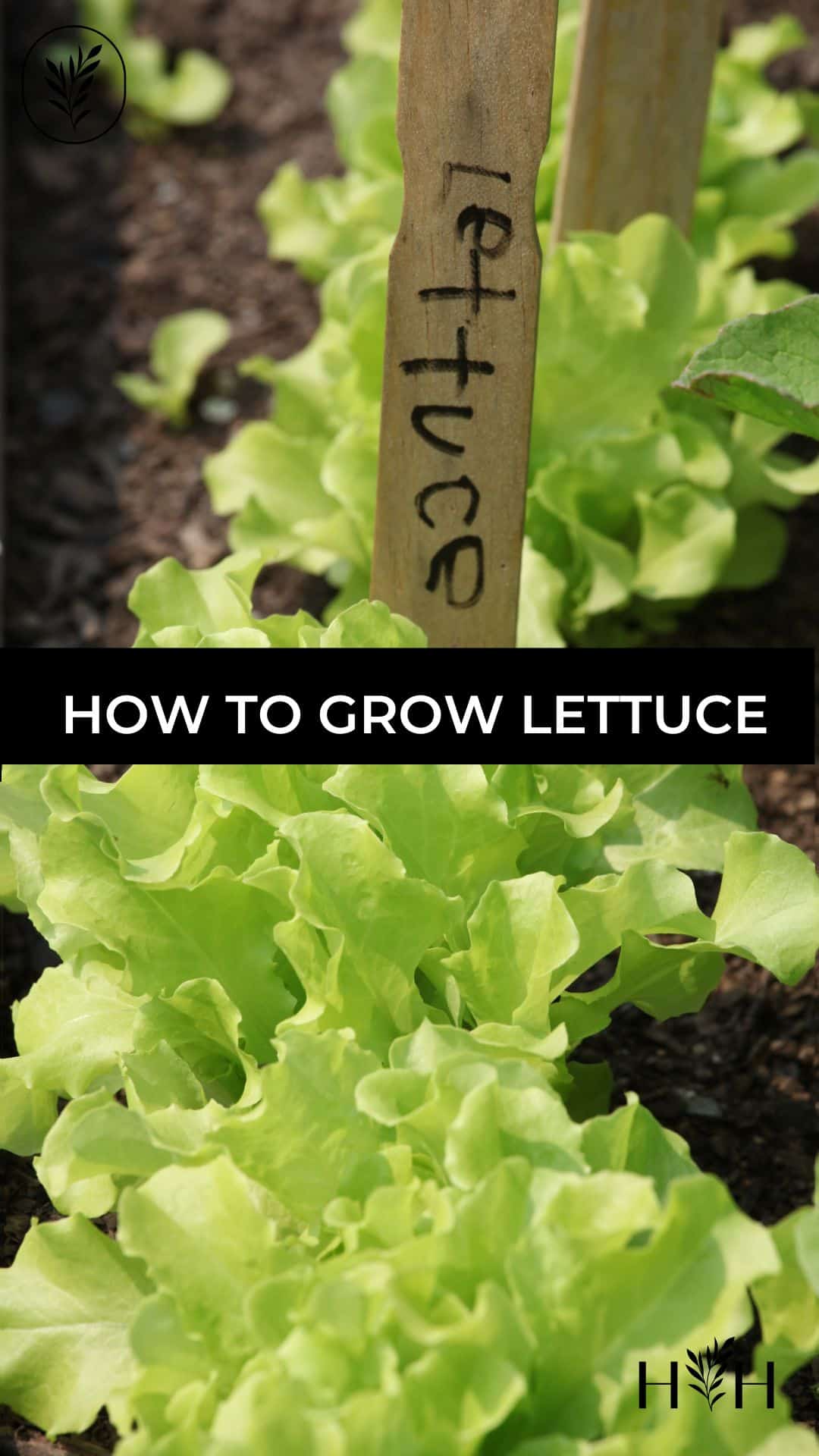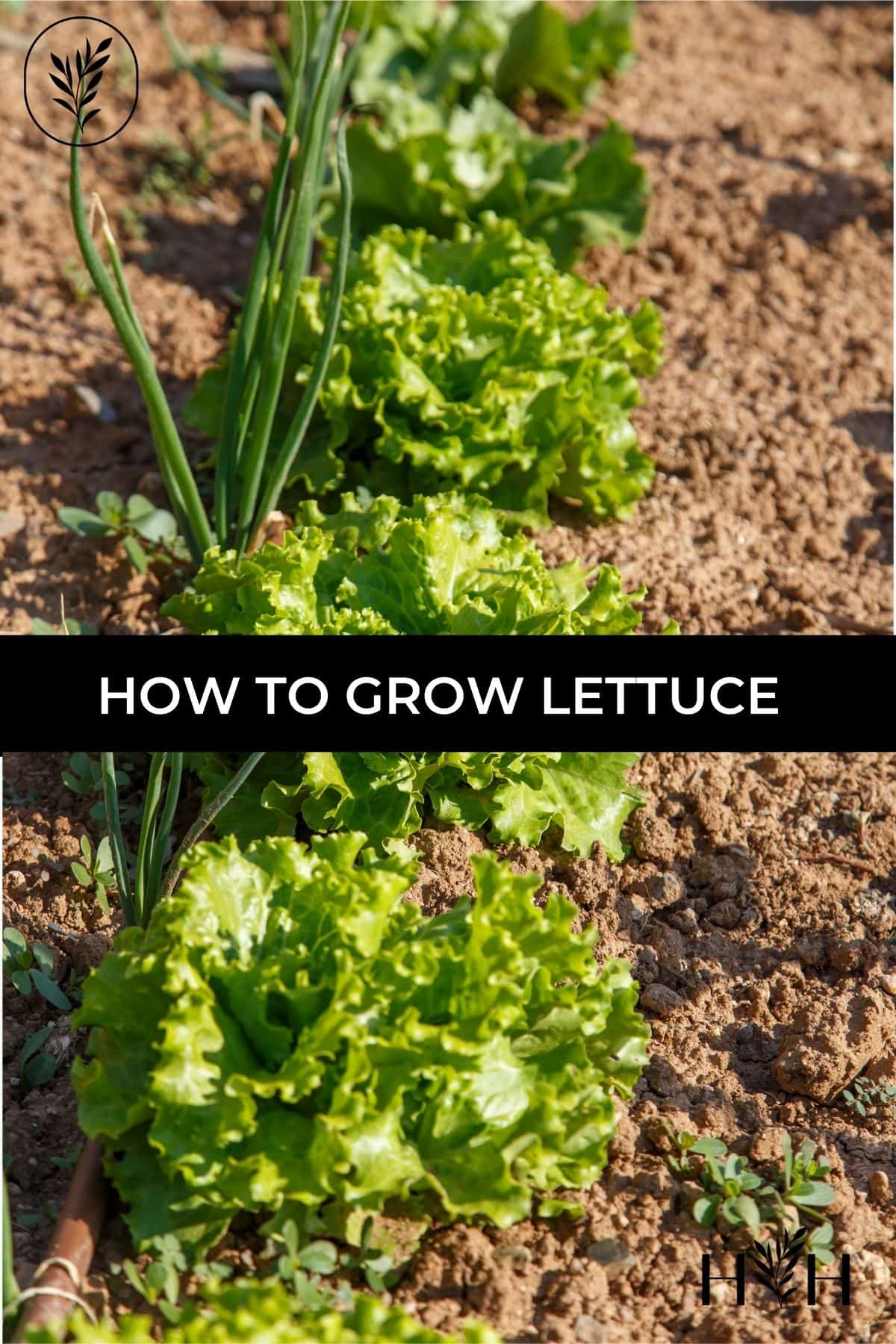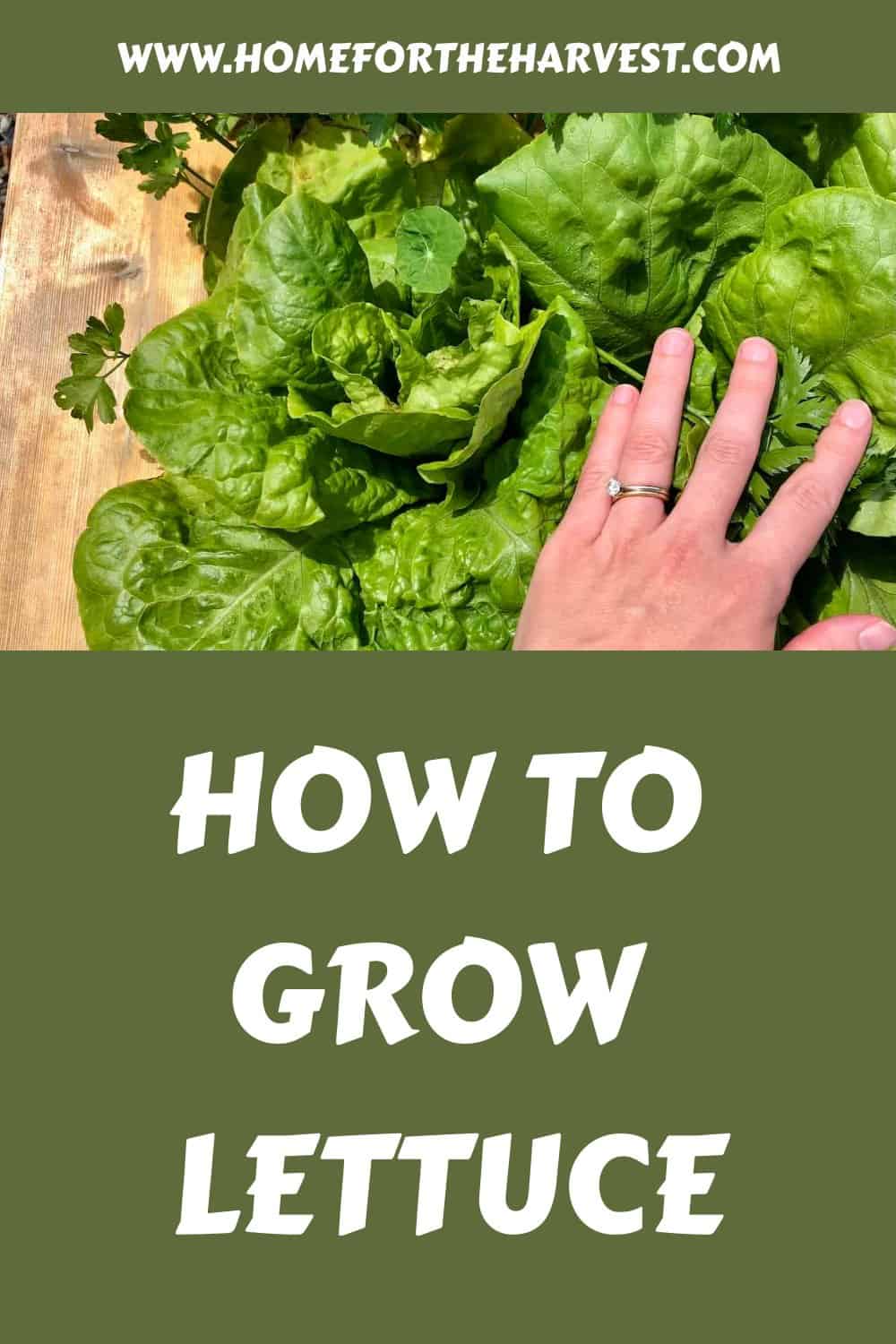Lettuce can be grown in an outdoor garden, in pots on the patio, or even indoors in a hydroponic system. Lettuce can be planted by sowing seeds or transplanting baby seedlings. Keep the soil moist, fertilize, and watch out for pests. Harvest leaves or whole heads when they are young and tender. Lettuce is a cool-season crop and grows best in spring or fall.
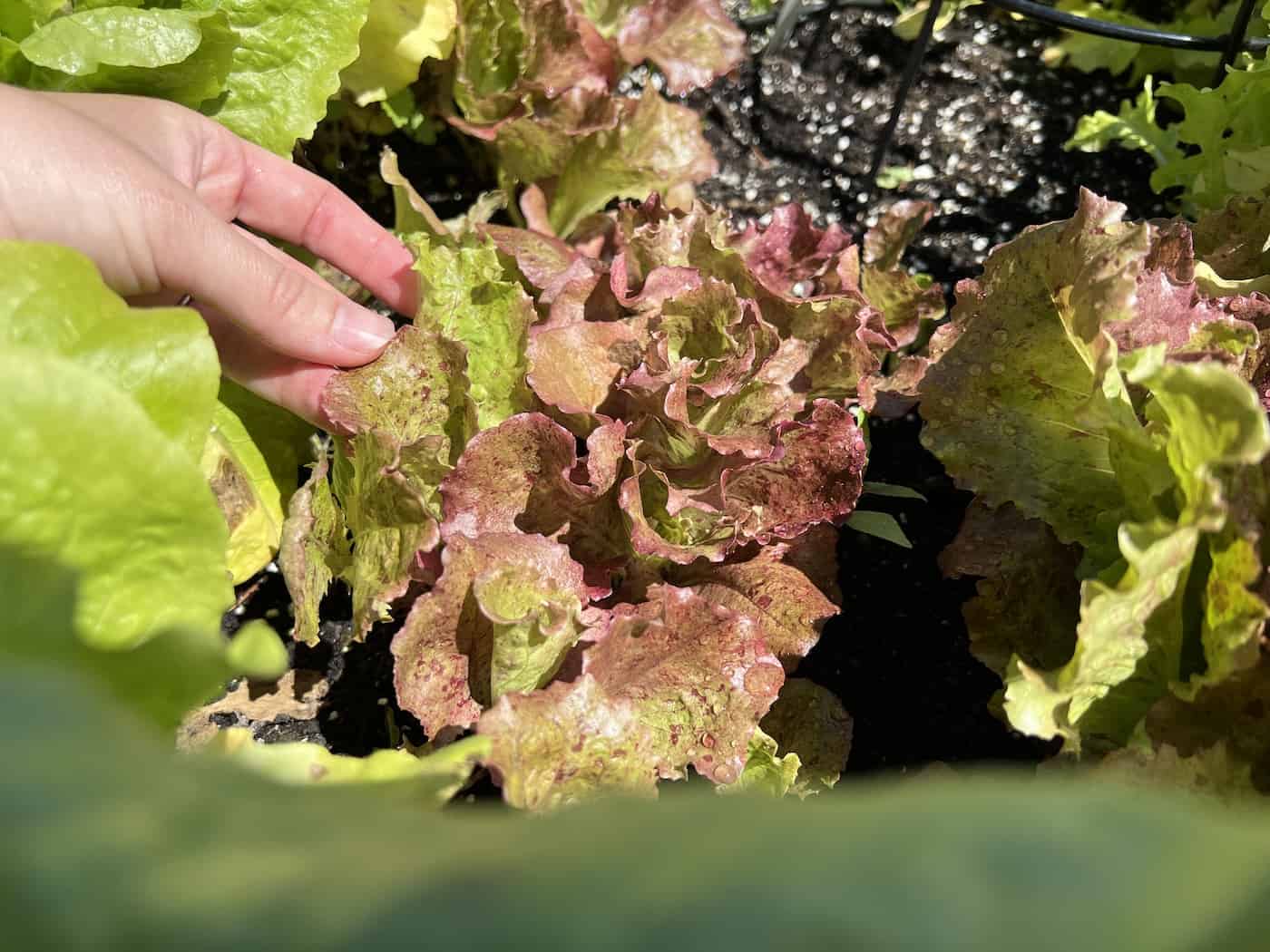
How to grow lettuce
Growing lettuce is a great way to add fresh greens to your diet. With the right soil preparation, sunlight requirements, and watering tips, you can have a successful harvest of delicious lettuce in no time.
The best soil for growing lettuce should be light and well-draining. If your soil is heavy or clay-like, consider adding organic matter such as compost or aged manure to help improve drainage. Lettuce grows well in raised beds and can even be grown indoors if you like.
Lettuce needs about 4-6 hours of direct sunlight each day to thrive. Planting it in an area that gets full sun (if you have it) will ensure that it grows quickly and produces plenty of leaves for harvesting later on. If you live in an area with hot summers, partial shade may be necessary during midday-afternoon when temperatures are highest. While direct sunlight is preferable, lettuce is also tolerant of shade.
There are several different types of lettuce you can grow in your garden, from open loose-leaf cultivars to upright romaine and tightly curled crispheads. Within each category, there are quite a few popular individual cultivars to choose from. Here are some of the best varieties of lettuce to plant. Most common types are available as seeds in packets or you can even buy starter seedling plants at the garden center.
When planting seeds directly into the ground make sure they’re spaced about 4 inches apart so they have enough room to grow without overcrowding one another once mature plants start forming heads of lettuce. Cover them lightly with a 1/4 inch layer of soil and keep them moist until germination occurs (usually within 5-7 days).
When purchasing seedlings from a nursery look for healthy plants free from disease or pests before bringing them home. You can also grow your own seedlings indoors at home.
To plant your seedlings, dig holes only as deep as their root balls. Backfill around it with soil while making sure not to bury any part of the stem above ground level. Water thoroughly after planting.
Keep newly planted seeds or seedlings consistently moist but not soggy by providing 1 inch per week either through rainfall or irrigation, depending on climate conditions. Once established, reduce frequency but increase the amount up 2 -3 inches per week if possible, especially during summer months when heat can dry out topsoil quickly, causing wilting & yellowing leaves.
Fertilize every two weeks using liquid fertilizer diluted according to package instructions, then spread a 2-3 inch thick layer of mulch over the surface surrounding the plants. This helps retain moisture and prevent weeds from taking over the garden bed, plus adds nutrients back into the soil over time as it decomposes naturally over time.
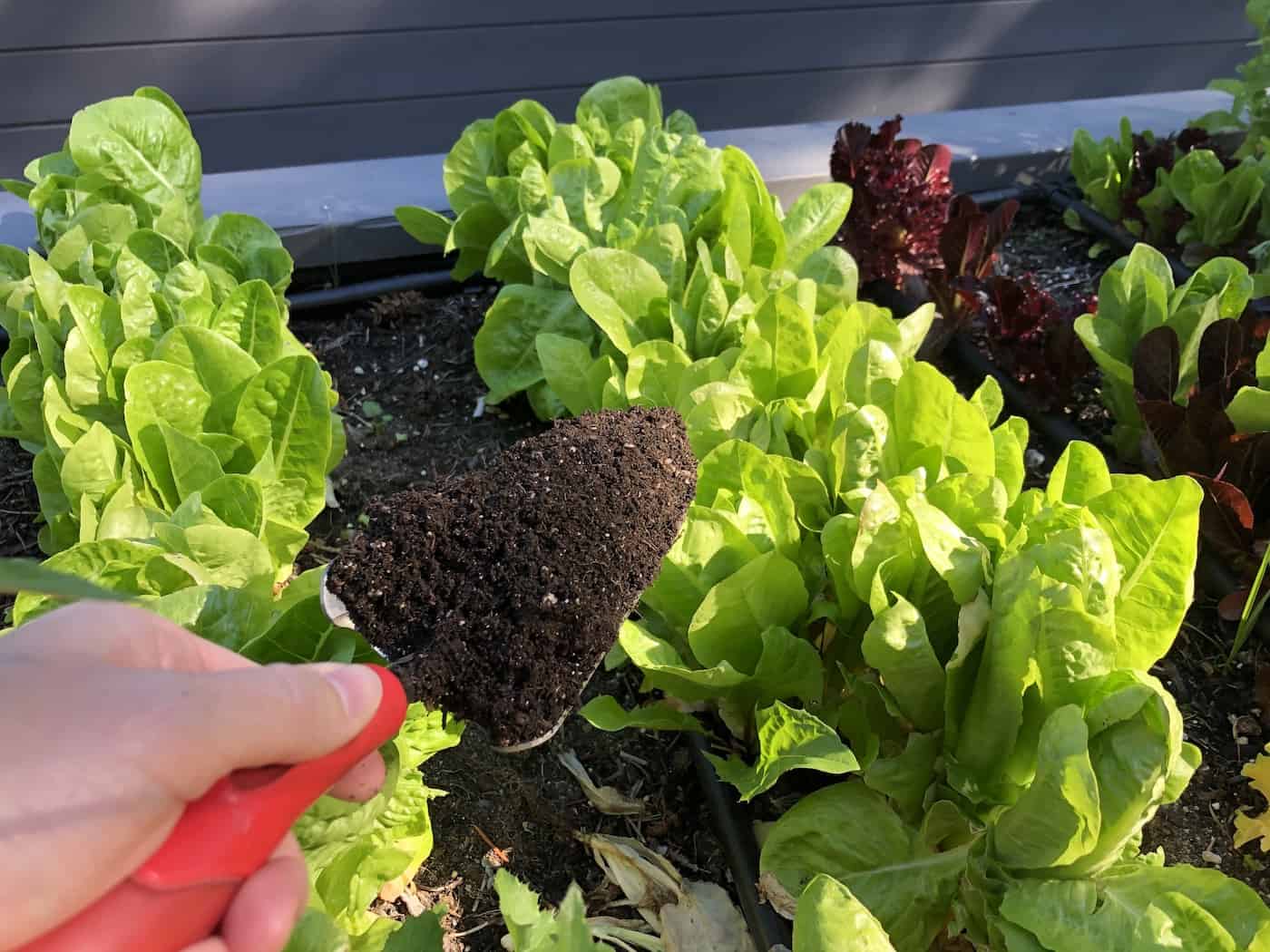
Soil preparation before planting
Good soil is the foundation of any successful garden, and it’s especially important when growing lettuce. Before planting, you should check the pH level of your soil to make sure it’s between 6.0 and 7.5; if not, you can adjust it with lime or sulfur accordingly. That said, lettuce is tolerant of less-than-perfect soil!
You also want to ensure that your soil is well-draining so that water doesn’t pool in the area where you’re planting lettuce seeds or seedlings. To do this, mix in some compost or aged manure before planting to help loosen up heavy clay soils and improve drainage. If your soil isn’t nutrient-rich enough for growing vegetables like lettuce, consider adding a balanced fertilizer as well as organic matter such as composted leaves or grass clippings before sowing seeds or transplanting seedlings into the ground.
Finally, don’t forget about weed control – use a pre-emergent herbicide prior to sowing seeds so that weeds won’t compete with young plants for resources during their early stages of development.
Proper soil preparation is key to successful lettuce growth. Now, let’s look at the sunlight requirements for growing healthy lettuce.
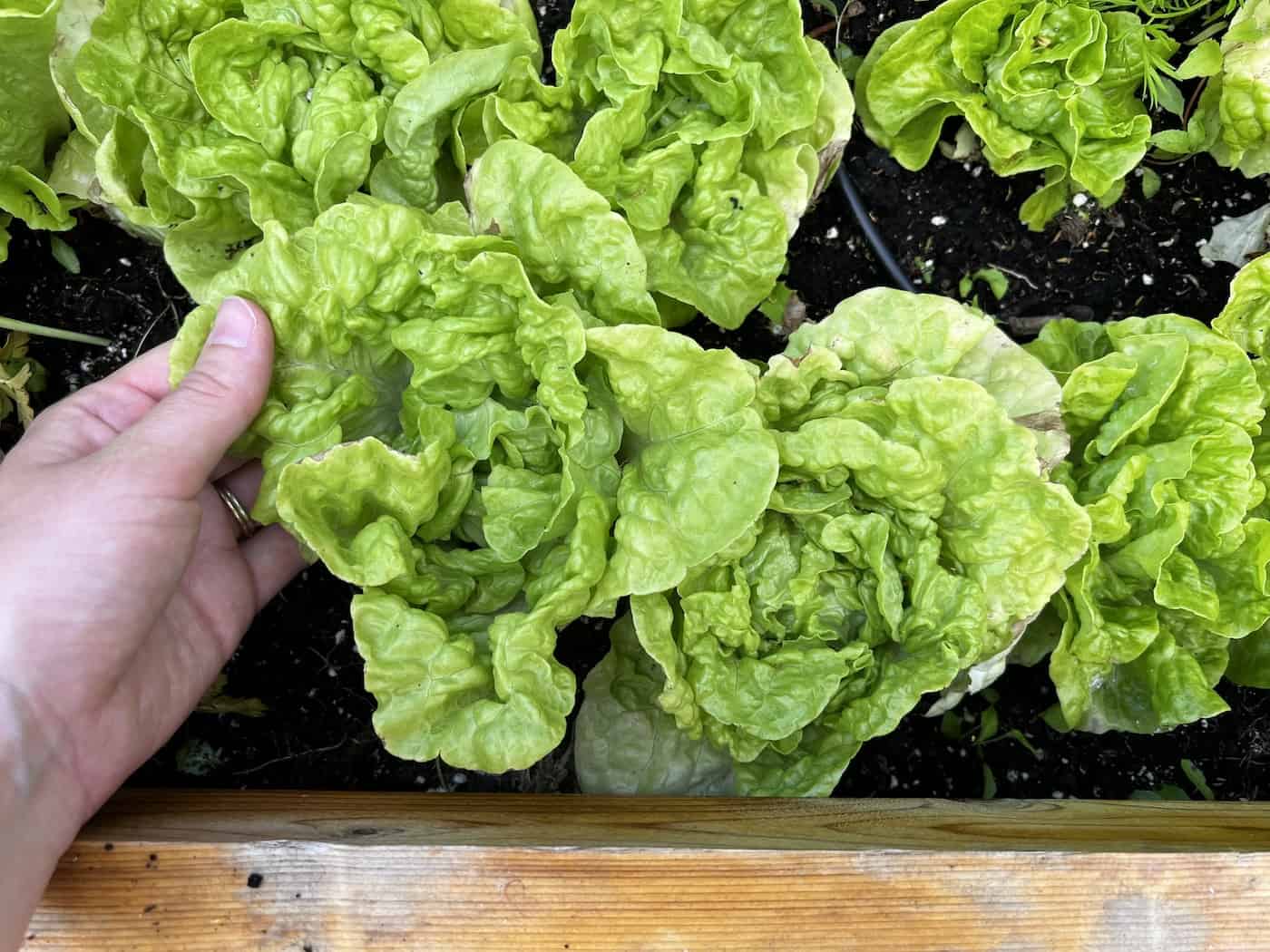
Sunlight requirements for lettuce plants
Lettuce is a cool-season crop that needs plenty of sunlight to thrive. It requires at least 6 hours of direct sunlight per day but can tolerate some shade. Lettuce grows best in full sun, so it’s important to choose the right spot for your garden bed or container.
When selecting a location for your lettuce patch, look for an area with good air circulation and protection from strong winds. If you live in an area with hot summers, try planting your lettuce in partial shade or under trees where it will get some relief from the heat during the hottest part of the day.

If you’re growing lettuce indoors or on a balcony, make sure to place containers near windows that receive plenty of light throughout the day. Keep in mind that too much direct sunlight can be damaging to plants – especially when temperatures are high – so make sure not to leave them out too long during peak sunlight hours (10am-4pm).
You may need to supplement natural light with grow lights if there isn’t enough sunshine coming through your windows. There are some great pre-lit systems for growing lettuce indoors. I grow both Aerogarden lettuce and Click & Grow lettuce indoors.
It’s also important to note that different types of lettuce have different requirements when it comes to sunlight exposure; leafy varieties like romaine and butterhead require more than crisphead varieties such as iceberg and head lettuces do. So if you plan on growing multiple types of lettuce together, keep this in mind when choosing their location.
Finally, don’t forget about water: while they prefer sunny spots, lettuces still need consistent moisture levels throughout their growth cycle – otherwise, they’ll become bitter tasting and tough. Make sure you’re providing enough water each week depending on how much rain has fallen recently – usually, 1-2 inches per week should suffice – but adjust accordingly based on weather conditions and soil type/drainage capabilities.
Proper sunlight requirements are essential for successful lettuce growth, so make sure to find the right spot before planting your seeds.
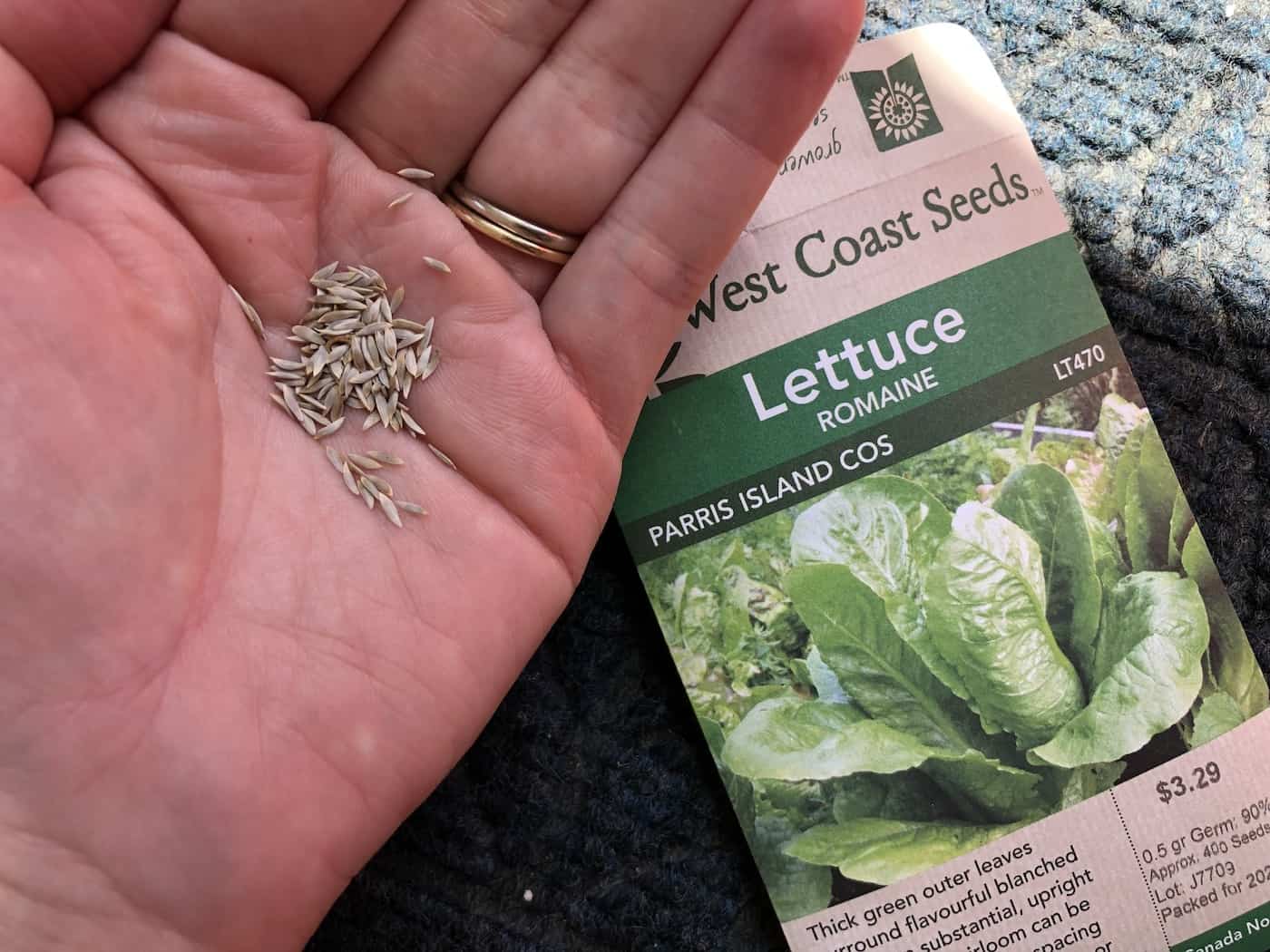
Planting lettuce seeds
Planting seeds is an easy and rewarding way to grow your own lettuce. To get started, you’ll need some soil, a container or garden bed, and the seeds themselves.
Lettuce seeds germinate well at a wide optimal soil temperature range of 40°-80°F (4°-27°C). These tough seeds can even germinate at soil temperatures as low as 35°F (2°C), although they’ll usually take a few weeks. On the other hand, they don’t like temperatures to be too warm and don’t germinate in soil over about 85°F (29°C). If you’re worried about the temperature of your soil, a soil thermometer is very much worth buying.
Before planting your lettuce seeds, make sure that the soil is prepared properly. The best type of soil for growing lettuce is one that has good drainage and contains plenty of organic matter, such as compost or manure. If you’re using a container for planting, use potting mix instead of regular garden soil.
Lettuce needs at least 4 hours of direct sunlight to thrive. That said, if you live in an area with hot summers, it’s best to plant your lettuce in partial shade, so it doesn’t get too much sun during the hottest part of the day.
Sow your lettuce seeds directly into the soil about 1/4 inch deep and spaced 2 inches apart from each other. You can thin out plants later when you harvest baby greens, so don’t worry about planting too thick unless you don’t have many seeds.
Here are some typical lettuce plant spacing guidelines for full-size heads:
- Home garden: 8-12 inch diameter circle
- Square foot garden: 4 plants per square foot
- Field rows: 12 inches between plants, 18 inches between rows
Water lightly after planting to help them germinate faster and keep them moist until they sprout up through the surface of the soil (usually within 7-10 days). You can also start your plants indoors by sowing them in small pots filled with the potting mix before transplanting them outdoors when they have grown large enough (about 3-4 weeks).
Once planted, water regularly – about once every two days – making sure not to overwater, which can cause root rot and disease problems later on down the line. Make sure that all parts of the plant are getting watered evenly; if possible, try using drip irrigation systems which allow for better control over how much water goes where exactly.
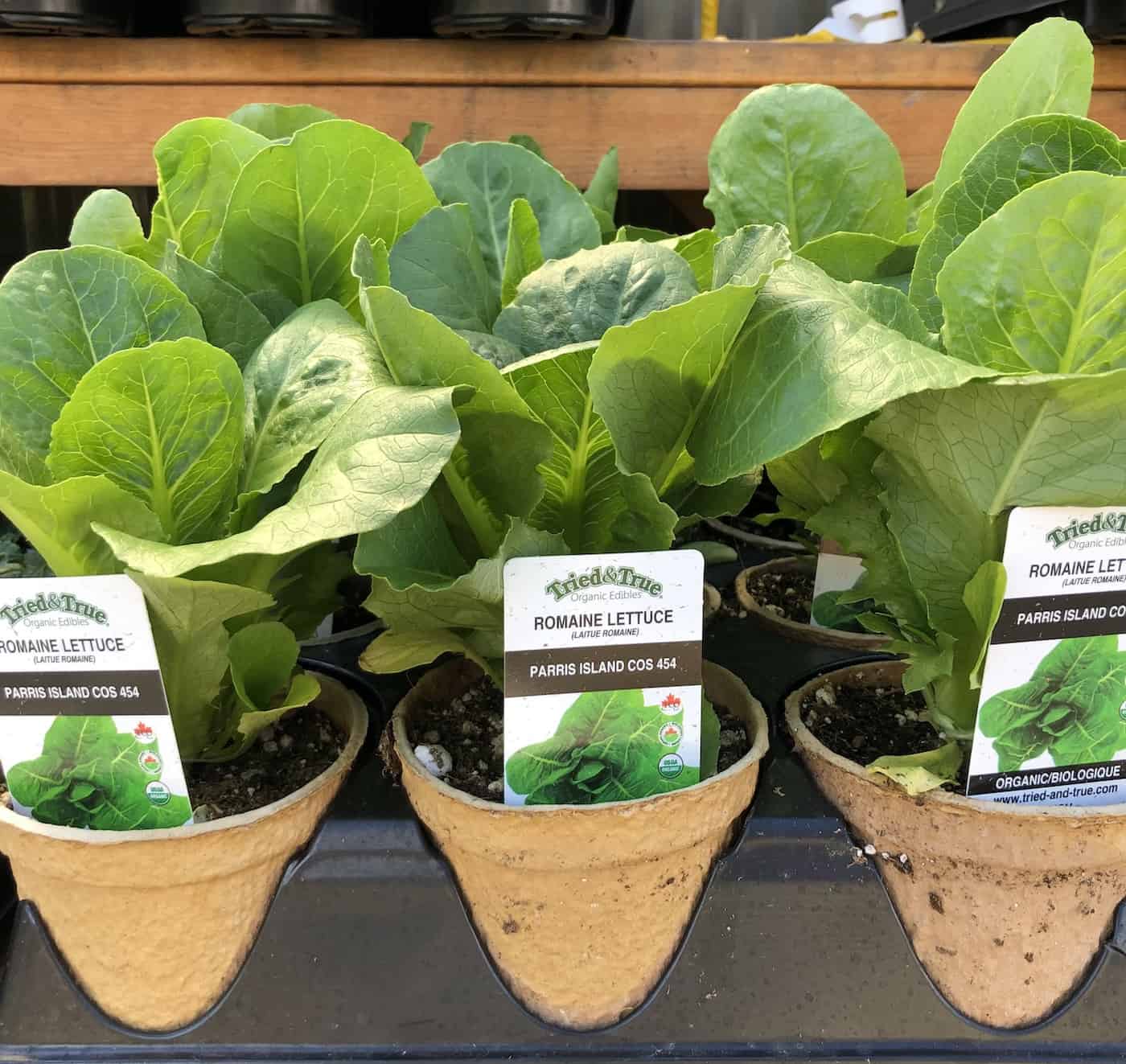
Planting baby seedling plants from the nursery
Planting baby seedling plants from the nursery is a great way to get your garden off to a good start. Not only do you have access to more varieties of lettuce than you would find in seeds, but it also saves time and energy since the plants are already started for you.
When selecting seedlings at the nursery, look for healthy-looking plants with no signs of disease or insect damage. The leaves should be bright green and perky, not wilted or yellowing. Also, check that no weeds are growing around the base of each plant, as this can indicate poor care from the grower.
Before planting your new seedlings, make sure they’re well watered, so their roots don’t dry out during transplanting. Dig holes slightly larger than the root ball and place each plant into its own hole about 8 inches apart if planting multiple lettuce heads together in one area; otherwise, space them 12 inches apart if creating individual rows throughout your garden bed. Gently fill the soil back around each plant until firmly packed down, then water thoroughly again after planting has been completed.
If possible, wait until evening or early morning when temperatures are cooler before transplanting your new lettuce babies into their permanent home to reduce shock on them due to temperature fluctuations throughout the day (especially important during hot summer months).
If needed, provide some shade over newly planted areas with burlap or other breathable fabric for extra protection against sunburned leaves, which can occur quickly under direct sunlight exposure without any acclimation period first.
Planting baby seedling plants from the nursery is a great way to get started in your garden, but remember that they need plenty of water and attention. Now let’s look at some tips on how to keep them hydrated.
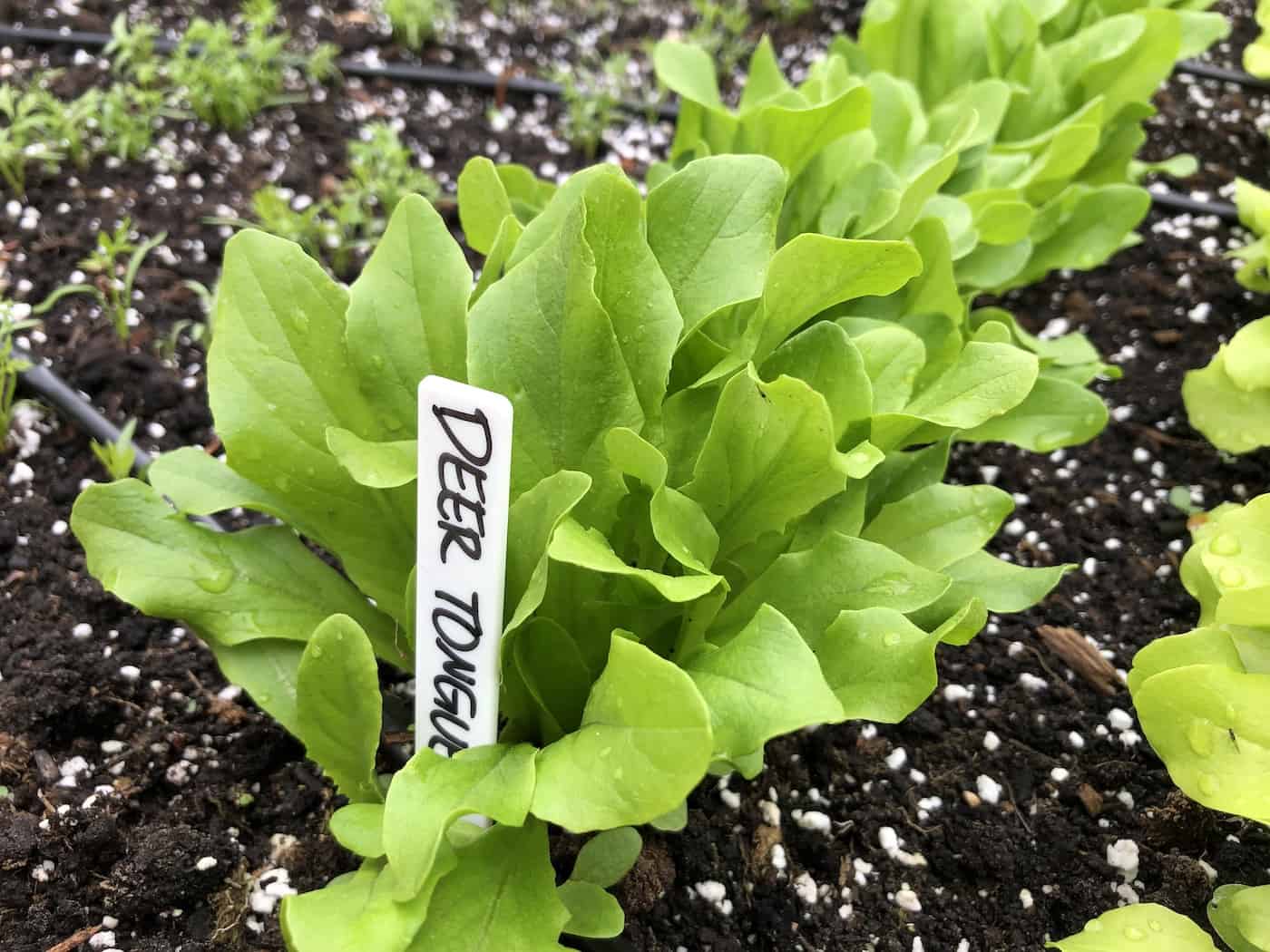
Watering tips when growing your own lettuce
Watering your lettuce is essential for keeping it healthy and growing. It’s important to keep the soil moist but not soggy, as this can cause root rot or other issues. The best way to water lettuce is deeply a couple of times per week or more often in hot weather. To do this, use a garden hose with a nozzle that has an adjustable spray setting so you can control how much water comes out at one time. If you don’t have access to a hose, use buckets of water instead – just make sure they are emptied completely after each watering session.
When watering your lettuce plants, aim for the base of the plant rather than over-spraying its leaves with too much water, which could lead to disease and fungal growth in the foliage. Also, avoid getting any of the leaves wet if possible, as this will encourage leaf diseases such as powdery mildew or downy mildew. When watering young seedlings, it’s best to gently pour some lukewarm water around them until their soil looks evenly dampened – be careful not to drown them by pouring too much.
If you live in an area where rainfall isn’t consistent throughout the year, then consider investing in irrigation systems like drip hoses or sprinklers that will help ensure your lettuce plants get enough moisture without having to manually water them every day yourself. This is especially helpful during periods of drought when rain may be scarce, and temperatures are high – these systems will provide steady hydration for your plants even when Mother Nature doesn’t cooperate.
Watering your lettuce regularly is key to growing a healthy and abundant crop, so be sure to keep an eye on the moisture levels of your soil. Now let’s look at how fertilizing and mulching can help you get the most out of your lettuce plants.
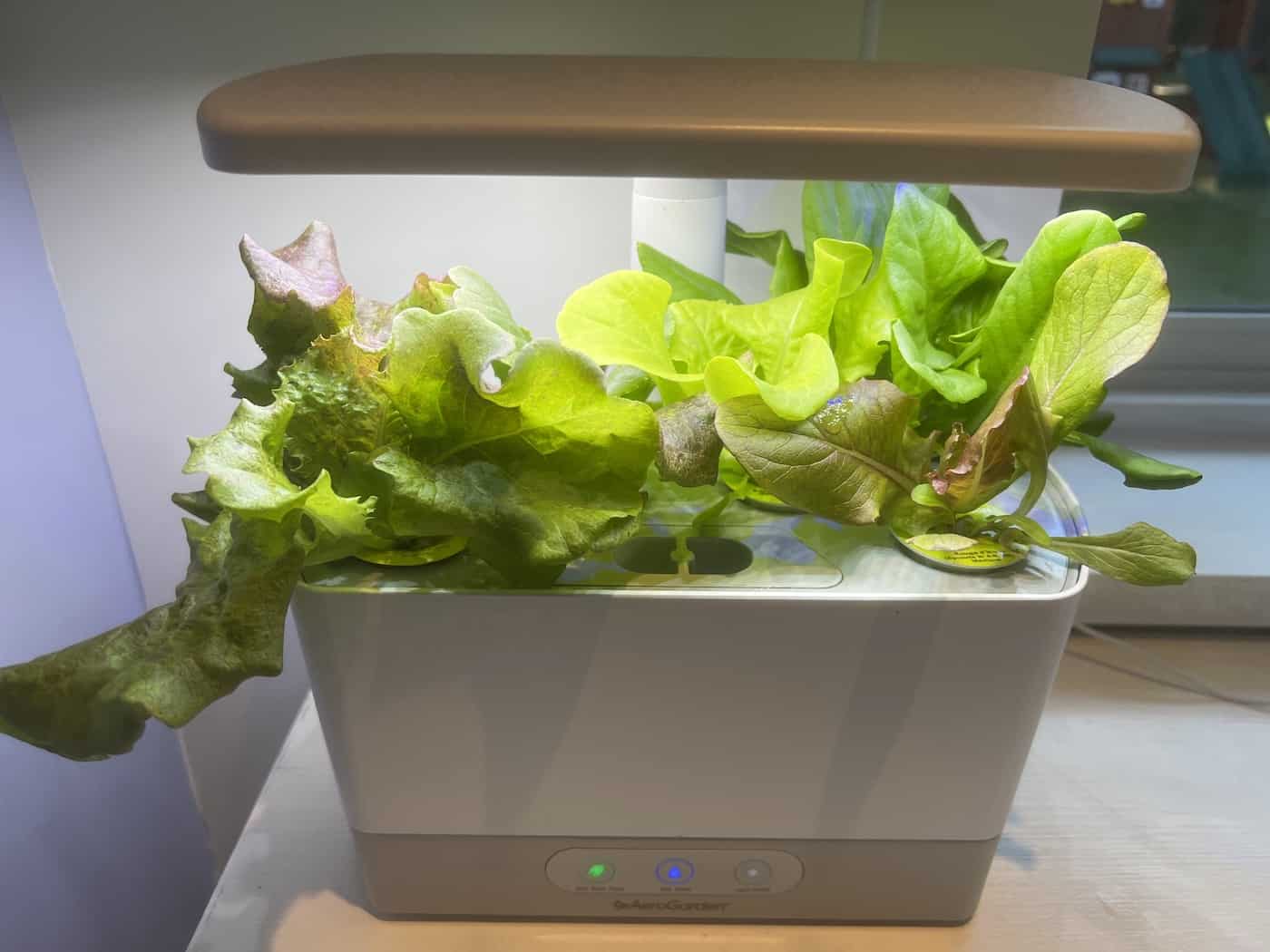
Fertilizing & mulching your salad garden
Fertilizing and mulching are important steps in the gardening process that will help your lettuce grow to its fullest potential. Fertilizer helps provide essential nutrients for healthy growth, while mulch helps retain moisture and suppress weeds.
When fertilizing, use a balanced fertilizer throughout the growing season. Apply according to package instructions and avoid overfertilizing, which can burn plants. If you’re unsure of how much fertilizer to apply, it’s best to err on the side of caution by using less than what is recommended on the package label.
Mulching is also an important step in gardening with lettuce. Mulch helps retain moisture in the soil so plants don’t dry out too quickly between waterings; this is especially helpful during hot summer months when temperatures soar and rainfall may be scarce. It also suppresses weed growth so that you won’t have to spend time weeding around your lettuce plants as often. Organic materials like straw or shredded leaves make great mulches for vegetable gardens; just spread a layer two inches thick around each plant after planting them in their permanent location outdoors (or at least after they’ve grown large enough).
These simple steps will help ensure success with your lettuce crop. With regular fertilization and adequate mulching, you can enjoy fresh salads all season long without having to worry about pests or disease problems ruining your harvest.
Fertilizing and mulching are essential steps to ensure healthy lettuce growth. With the right techniques, you can now move on to harvesting and storing your lettuce for maximum freshness.
Harvesting lettuce
Harvesting lettuce is an exciting time for gardeners. It’s usually 4-6 weeks after planting that the leaves reach their desired size. For harvesting, use a sharp knife or scissors to cut off the entire head of lettuce at its base. If you want to harvest individual leaves, pick them from the outside inwards as they are ready and leave some of the inner leaves intact so your plant can continue growing.
When storing lettuce, it’s important to keep it cool and dry. The ideal temperature range is between 32°F and 40°F (0°C – 5°C). Lettuce should be stored in a plastic bag with holes punched into it for ventilation; this will help reduce moisture buildup, which could cause mold growth on your produce. Refrigerate for up to two weeks if possible but remember not to wash before refrigerating as this can lead to spoilage faster than normal due to excess moisture being trapped inside the bag.
You can also harvest seeds from your lettuce plants. This works well for heirloom open-pollinated varieties, especially if you’re only growing one cultivar. It’s fun to collect the seeds off of the tall flower stalks and save them to plant next spring.
Pest control in the lettuce garden
It’s important to inspect your plants regularly for signs of pests. Aphids, slugs, and other insects can cause serious damage to your garden if left unchecked. If you notice any signs of infestation, it’s important to take action quickly in order to prevent further damage.
The first step is identifying the type of pest that has invaded your garden. Common culprits include aphids, slugs, caterpillars, beetles, and mites. Look closely at the leaves and stems of each plant for evidence such as discoloration or holes in the foliage. You may also find eggs or larvae on some plants, which indicates a larger problem than just one insect species present in your garden.
Once you have identified the pest(s), several methods are available for treating them depending on their type and severity level. For example, aphids can be treated with an insecticidal soap spray while caterpillars can be removed by hand-picking them off individual plants or using a biological control such as Bacillus thuringiensis (Bt).
Slugs can be controlled by setting up barriers around vulnerable plants or using beer traps filled with yeast-based bait solutions that attract them away from desirable areas of the garden. Sticky traps and insecticidal dusts may also be used if needed.
It is important to follow label instructions on all products used in the garden, taking care to use the least toxic method possible. There are many natural approaches to pest management, such as companion planting, attracting beneficial insects, and making sure your plants have proper nutrition.

FAQs about how to grow lettuce
How do you grow lettuce for beginners?
Growing lettuce is a simple and rewarding task for beginners. Start by selecting a sunny spot in your garden with well-draining soil. Loosen the soil, then mix in some compost or aged manure to provide nutrients.
Plant seeds 1/4 inch deep and about 2 inches apart, then cover lightly with soil. Water regularly and thin out seedlings when they are about 3 inches tall so that remaining plants are 8 to 12 inches apart.
Harvest leaves as needed once they reach 4 to 6 inches tall; you can also harvest entire heads of lettuce when ready. With regular care, you’ll be enjoying delicious homegrown lettuce in no time.
How long does it take to grow lettuce?
Lettuce is a fast-growing vegetable that can be harvested in as little as 30 days (for baby greens). It’s best to start with young plants or seeds, and you should expect to harvest within 6 weeks of planting. You’ll need plenty of sunlight and water for the lettuce to grow properly, but it doesn’t require any special care beyond that. With proper care, you can enjoy fresh lettuce from your garden all season long.
Does lettuce need full sun?
No, lettuce does not need full sun. It prefers partial shade or filtered sunlight for best growth and flavor. Too much direct sun can cause the leaves to become bitter and wilt quickly. Lettuce also needs consistent moisture in order to thrive, so it is important to water regularly when planted in a sunny spot. Additionally, planting lettuce near taller plants that provide some shade will help protect it from too much direct sunlight.
Before you go…
With the right soil preparation, sunlight requirements, planting methods, and care tips, you can successfully grow lettuce in your own garden. Once you have harvested your lettuce crop, store it properly for maximum shelf life and enjoy all the benefits of growing your own food!


